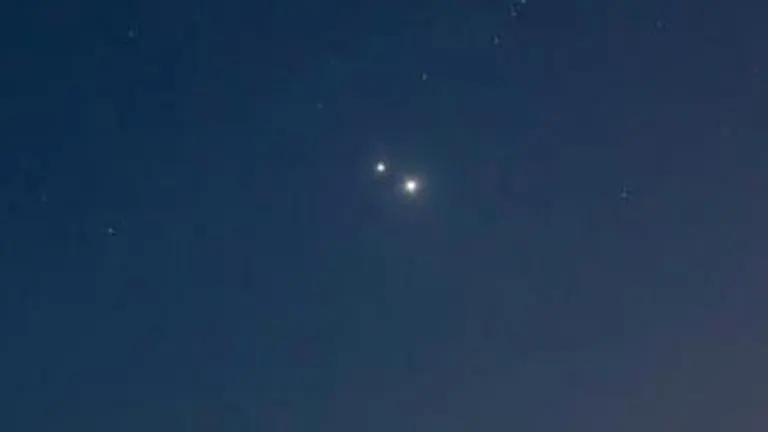Updated 6 March 2023 at 15:50 IST
Spectacular meeting of Venus & Jupiter becomes NASA's Astronomy Picture of the Day
On Sunday, the US space agency NASA shared the astronomy picture of the day which showcased the meeting of the planets Jupiter and Venus.
- Science News
- 3 min read

The US space agency NASA on Sunday shared the astronomy picture of the day which showcased the meeting of the planets Jupiter and Venus. The marvellous photograph was captured from a beach in Sicily, Italy. The photograph came a week after NASA revealed that the two planets will appear closest to each other in a rare planetary conjunction. The two of the solar system’s brightest planets appeared closest on March 1 and people from around the world managed to see the rare phenomenon with their naked eyes.
NASA stated that the picture was taken by Photographer Giovanni Tumino from an Italian beach in Sicily. NASA revealed that a week prior to this, Venus was rising higher in the night sky to meet the dropping Jupiter. However, in the Sunday picture, both planets have seemed to switch places. Contrary to their actual size, Venus appeared bigger than the largest planet in the solar system. The reason behind this size difference is the fact that Venus is closer to both Earth and the Sun. On February 25, NASA updated about the phenomena stating that the two planets will appear closest to each other on March 1. “There’s a meetup happening in the western sky: the crescent Moon sits close to Jupiter, with Venus below them. Jupiter and Venus will continue to cozy up until March 1, when they’ll be at their closest. Have you spotted these three in the sky? Snap a picture and send it to us!” the American space agency wrote on Twitter.
There’s a meetup happening in the western sky: the crescent Moon sits close to Jupiter, with Venus below them. Jupiter and Venus will continue to cozy up until March 1, when they’ll be at their closest.
— NASA (@NASA) February 24, 2023
Have you spotted these three in the sky? Snap a picture and send it to us! pic.twitter.com/8W1iihFz3w
What is a conjunction?
A conjunction is formed when planets meet up in the same sign and to an exact degree. The rare phenomenon occurs when the two astronomical objects (in this case the two planets) get closer to each other in the sky and can be viewed by the people on planet Earth. The phenomenon can also occur with other astronomical objects like asteroids, moons and stars. In the blog post, NASA revealed that one can still see the two planets an hour or so after sunset throughout the month of March, however, the two planets will continue to separate from each other as time goes by.
Published By : Bhagyasree Sengupta
Published On: 5 March 2023 at 18:19 IST
